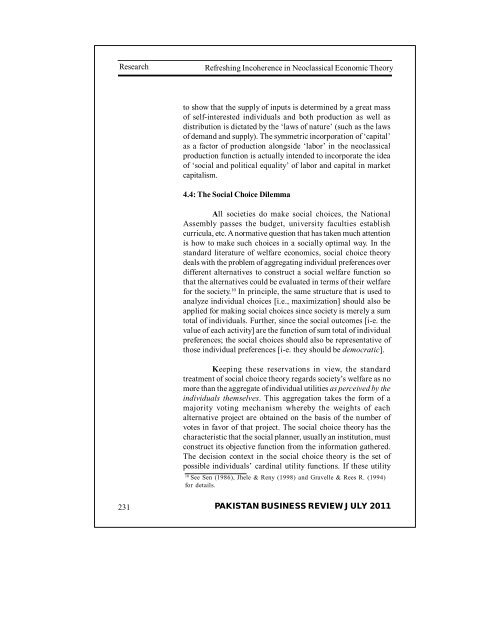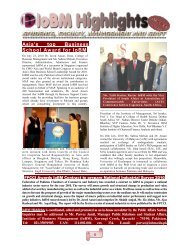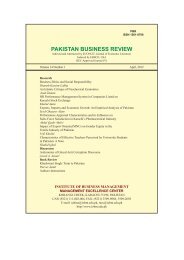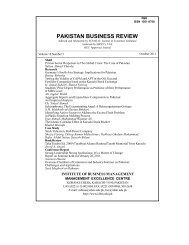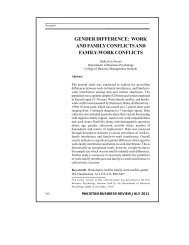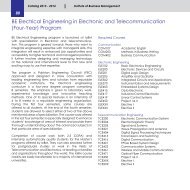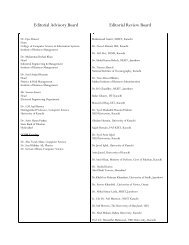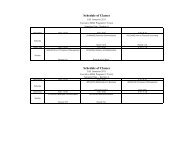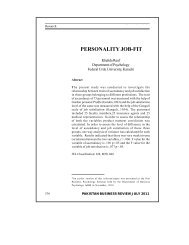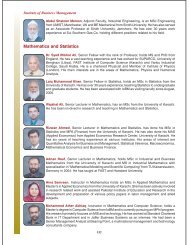PAKISTAN BUSINESS REVIEW - Institute of Business Management
PAKISTAN BUSINESS REVIEW - Institute of Business Management
PAKISTAN BUSINESS REVIEW - Institute of Business Management
You also want an ePaper? Increase the reach of your titles
YUMPU automatically turns print PDFs into web optimized ePapers that Google loves.
Research<br />
Refreshing Incoherence in Neoclassical Economic Theory<br />
to show that the supply <strong>of</strong> inputs is determined by a great mass<br />
<strong>of</strong> self-interested individuals and both production as well as<br />
distribution is dictated by the ‘laws <strong>of</strong> nature’ (such as the laws<br />
<strong>of</strong> demand and supply). The symmetric incorporation <strong>of</strong> ‘capital’<br />
as a factor <strong>of</strong> production alongside ‘labor’ in the neoclassical<br />
production function is actually intended to incorporate the idea<br />
<strong>of</strong> ‘social and political equality’ <strong>of</strong> labor and capital in market<br />
capitalism.<br />
4.4: The Social Choice Dilemma<br />
All societies do make social choices, the National<br />
Assembly passes the budget, university faculties establish<br />
curricula, etc. A normative question that has taken much attention<br />
is how to make such choices in a socially optimal way. In the<br />
standard literature <strong>of</strong> welfare economics, social choice theory<br />
deals with the problem <strong>of</strong> aggregating individual preferences over<br />
different alternatives to construct a social welfare function so<br />
that the alternatives could be evaluated in terms <strong>of</strong> their welfare<br />
for the society. 10 In principle, the same structure that is used to<br />
analyze individual choices [i.e., maximization] should also be<br />
applied for making social choices since society is merely a sum<br />
total <strong>of</strong> individuals. Further, since the social outcomes [i-e. the<br />
value <strong>of</strong> each activity] are the function <strong>of</strong> sum total <strong>of</strong> individual<br />
preferences; the social choices should also be representative <strong>of</strong><br />
those individual preferences [i-e. they should be democratic].<br />
Keeping these reservations in view, the standard<br />
treatment <strong>of</strong> social choice theory regards society’s welfare as no<br />
more than the aggregate <strong>of</strong> individual utilities as perceived by the<br />
individuals themselves. This aggregation takes the form <strong>of</strong> a<br />
majority voting mechanism whereby the weights <strong>of</strong> each<br />
alternative project are obtained on the basis <strong>of</strong> the number <strong>of</strong><br />
votes in favor <strong>of</strong> that project. The social choice theory has the<br />
characteristic that the social planner, usually an institution, must<br />
construct its objective function from the information gathered.<br />
The decision context in the social choice theory is the set <strong>of</strong><br />
possible individuals’ cardinal utility functions. If these utility<br />
10<br />
See Sen (1986), Jhele & Reny (1998) and Gravelle & Rees R. (1994)<br />
for details.<br />
231<br />
<strong>PAKISTAN</strong> <strong>BUSINESS</strong> <strong>REVIEW</strong> JULY 2011


